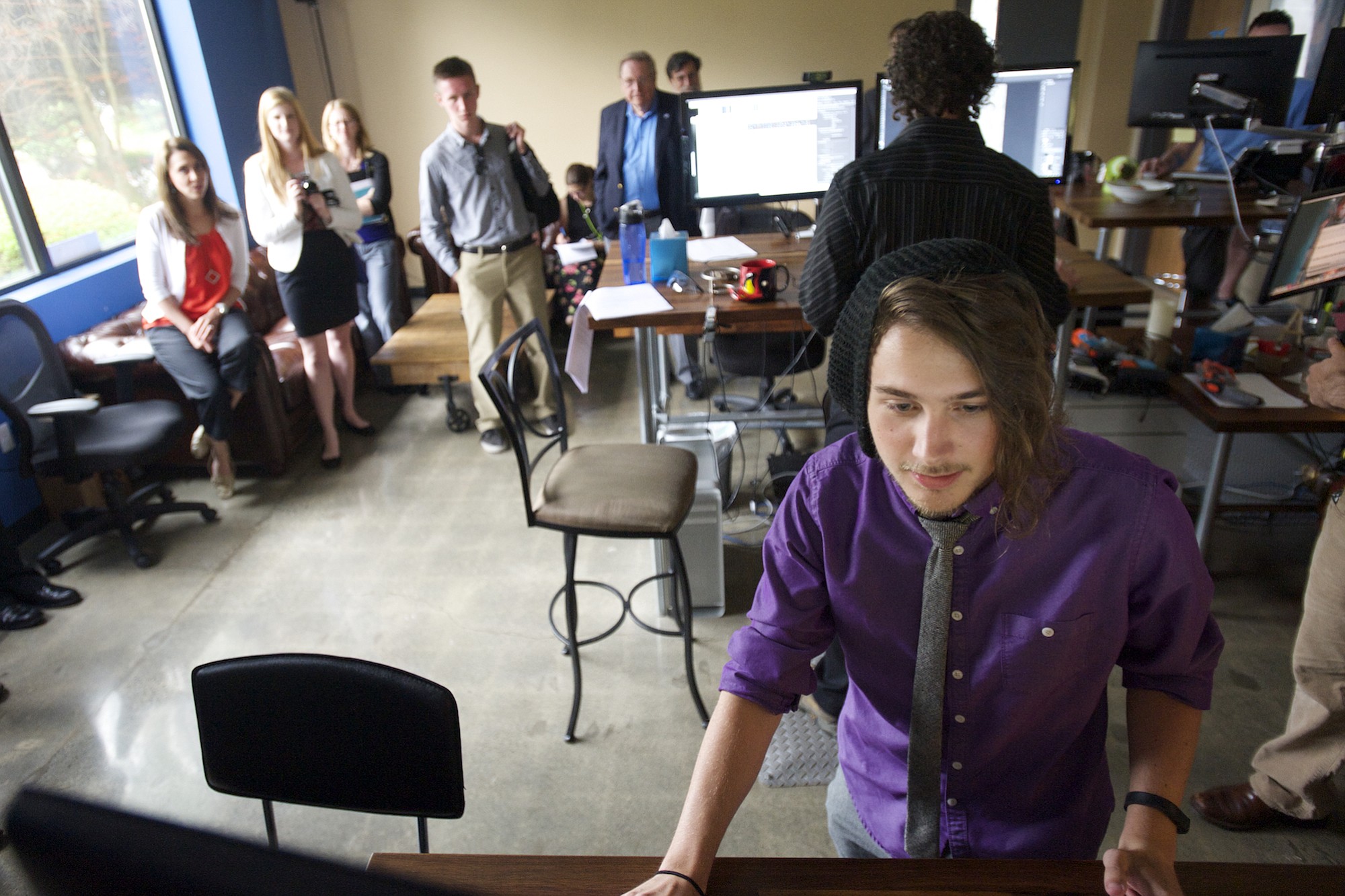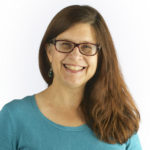U.S. Rep. Jaime Herrera Beutler, R-Camas, recognized four high school seniors Tuesday afternoon who likely are headed for careers in cutting-edge fields.
They were the four Southwest Washington winners in the first Congressional Science, Technology, Engineering and Math Academic Competition, a programming competition for high school students. Its purpose is to engage students’ creativity and to encourage them to consider a STEM career.
“Just hearing about the apps you’ve put together, I’m completely intimidated,” Herrera Beutler told the students. “Thank you for being willing to put yourself out there.”
• Mason Bruce, 17, a student at St. Elizabeth Ann Seton Catholic College Preparatory, a private high school, won first place for his grading application, “A+ Grade Calculator.”
It was the only app he has made. He bought an Apple license and plans to release his app to the Apple Store soon.
• Second place went to Alexander Sheppert, 17, of Skyview High School for “Hank the Dank Tank,” a game for a touchscreen tablet or other mobile device.
• The team of Rowyn Lea and Nathan Wreggit, both 17, from Skyview High School won third place for “High School Stereotype Quiz.”
The students built their apps in the spring or early summer. They used Java, HTML (HyperText Markup Language) or other programming languages.
Established by members of the U.S. House of Representatives in 2013, the competition encourages high school students to create and exhibit their software application, or app, for mobile, tablet or computer devices on a platform of their choice. Students entering the competition submitted their apps’ source code online and provided a video demo explaining their app and what they learned in creating it.
“When we build apps, we’re always interested in showing how people will use it,” said Dene Grigar in a presentation at the event. She is director of the Creative Media and Digital Culture program at Washington State University Vancouver.
People who can write computer code earn $60,000 and more annually, Grigar said.
The award ceremony brought competitors and organizers to Instructional Technologies, a Vancouver company that uses technology to create training videos and more for the transportation logistics industry. The Salmon Creek company employs computer programmers, animators and even a film director to create training videos for truck drivers, warehouse workers and others in the transportation industry.
Grigar places student interns at Instructional Technologies, and many are hired after their internships. Five graduates of her program now work there.
“We hire a lot of her students,” said Jim Voorhees, founder and CEO of Instructional Technologies. “It’s a great program.”
Then Voorhees led the students, Grigar and the congresswoman on a facility tour to meet some of Grigar’s former students and see how they are using STEM on the job.
Michael Langlois, 24, graduated from Grigar’s program in 2012 and was hired by Voorhees shortly after. He’s the company’s 3-D animator.
“It’s expensive to blow up trucks and crash them,” Langlois said. “So we do it in 3-D animation instead. We use Maya, which is commonly used by Pixar. We use a wide range of 3-D-centric apps.”
Robert Fortney, the company’s senior editor, is one of the few in the creative department who is not a graduate of Grigar’s program, but earned a degree in film. He stood in front of a green screen where they film original training videos. The creative team writes, films, edits, animates and records all the audio on site.
“We start with a script in my iPad,” Fortney said. “From that description, we talk like filmmakers and we’re telling stories. Ours are cinematic stories. This wouldn’t have been possible 10 years ago.”
As the high school students left the cavernous space with its high tables made for creative workers to work standing up, they pass a ping-pong table used “to boost morale” and an arsenal of Nerf guns. On Fridays, employees shoot Nerf darts at a grid labeled with favorite restaurants. They all go out for lunch at whichever restaurant gets the most darts.
Taking it all in, the students nod and talk among themselves.
“Next time, I’m thinking, we should do a theme for the competition,” Herrera Beutler said. “There’s no shortage of challenges.”




